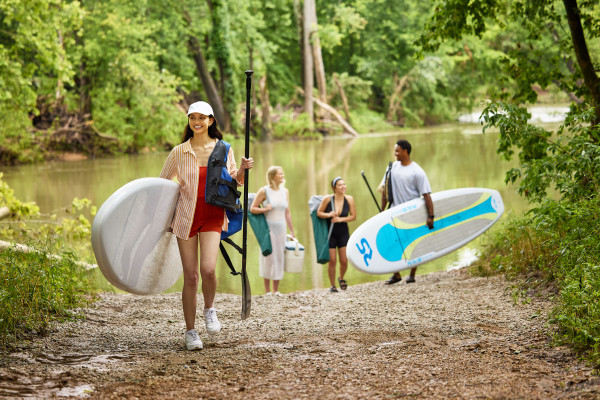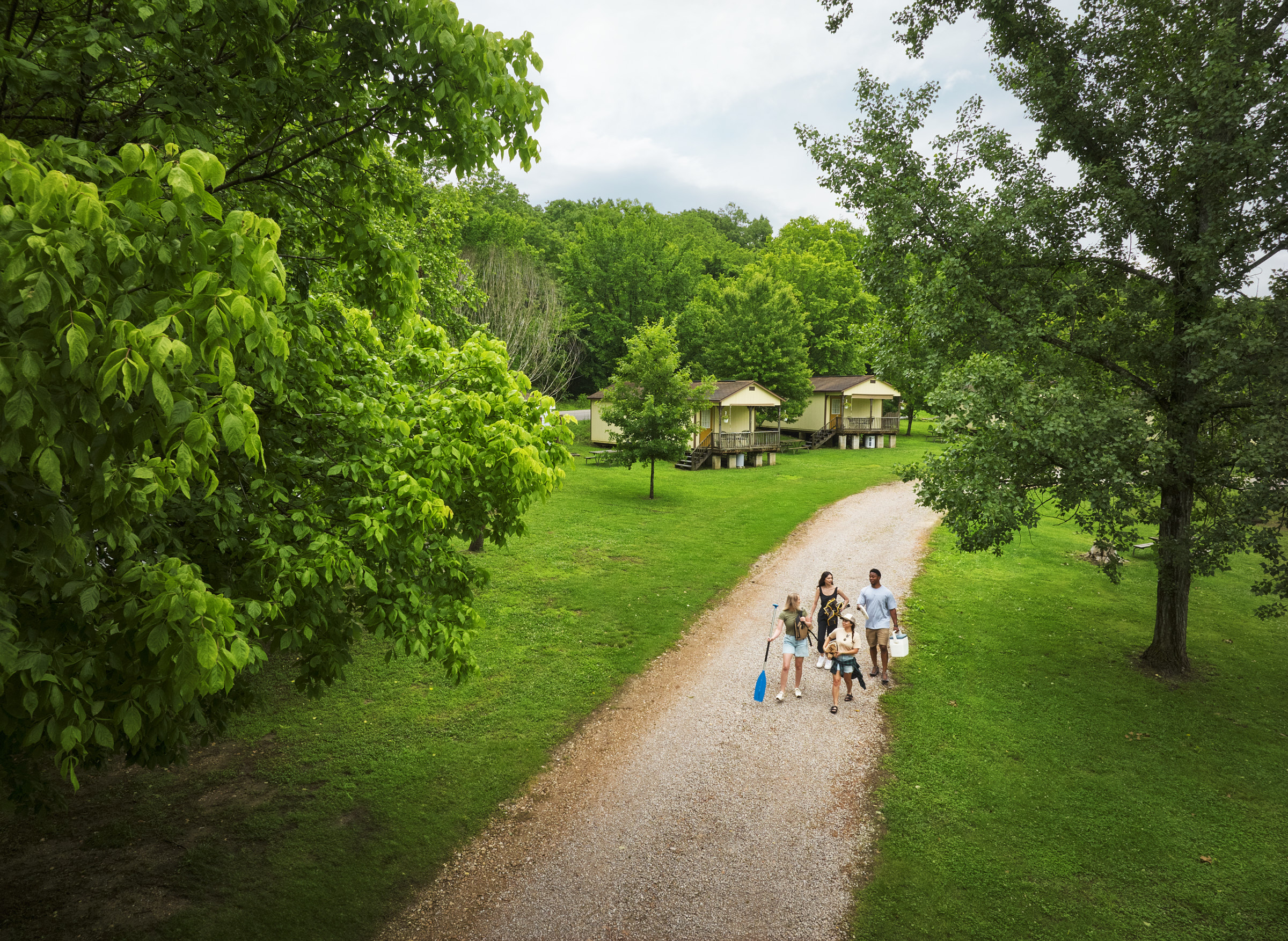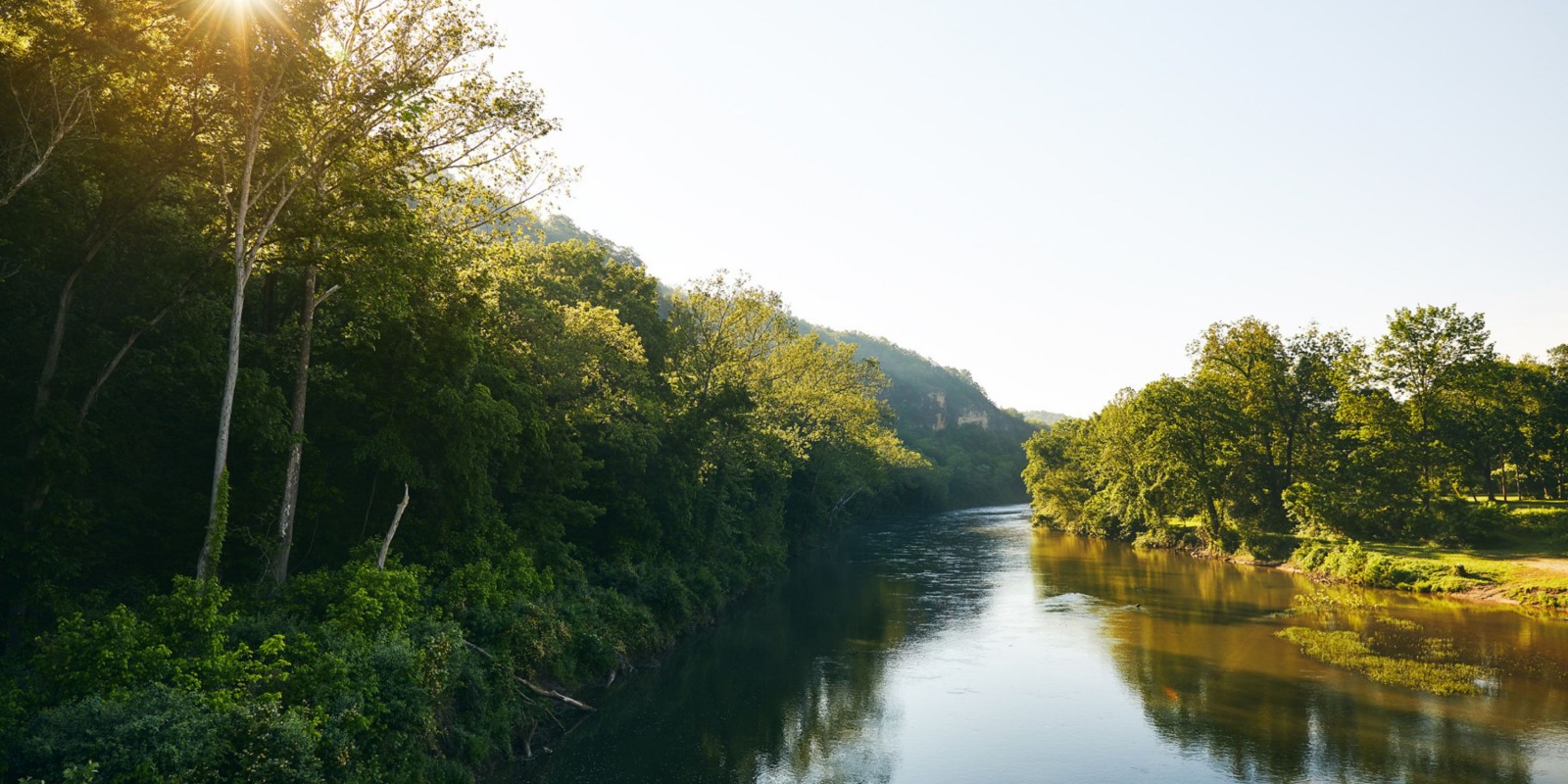Stories
Riverways of Pulaski County

Drift to New Adventures on the Riverways of Pulaski County, MO
Life can be hectic. Our obligations and responsibilities have a way of interrupting the flow, obscuring the true joys of life. So, when we encounter those rare opportunities to kick back, relax, and let the worries of everyday life melt away, we let the sought-after enjoyment wash over us, immerse us, and carry us to a more relaxed state of being. And there is no better place for the outdoor lover to do so than in Pulaski County.
A Current Event
The rivers that twist and wind through the hills of Pulaski County are the definitive Ozark experience, carrying vacationers down the pristine currents just as they did the tie rafters of long ago. The vessels have evolved — gone are the days of railroad ties crudely lashed together into makeshift rafts — but the spectacular views and cool currents are just as they have been for eons. Truly, this is the perfect place to unplug, unwind, and reap Mother Nature’s bounties.
 These waters aren’t exactly alike, though — the rivers of Pulaski County vary in both views and experiences. Take the Gasconade River. Winding through more than 100 miles of the county, this wide and swift-flowing river provides an exciting adventure for floaters of all ages, carving its way along spectacular bluffs, rural homesteads, and vast farmlands lining Historic Route 66. Putting in just north of Waynesville on a stretch dubbed by locals as “the Narrows,” floaters can enjoy a winding 15-mile float, translating to 2 miles as the crow flies. Meanwhile, the spring-fed Big Piney River cuts through 33 miles of Ozark landscape on the eastern border of Pulaski County — the lazy, meandering currents kept at a consistent, steady level almost year-round.
These waters aren’t exactly alike, though — the rivers of Pulaski County vary in both views and experiences. Take the Gasconade River. Winding through more than 100 miles of the county, this wide and swift-flowing river provides an exciting adventure for floaters of all ages, carving its way along spectacular bluffs, rural homesteads, and vast farmlands lining Historic Route 66. Putting in just north of Waynesville on a stretch dubbed by locals as “the Narrows,” floaters can enjoy a winding 15-mile float, translating to 2 miles as the crow flies. Meanwhile, the spring-fed Big Piney River cuts through 33 miles of Ozark landscape on the eastern border of Pulaski County — the lazy, meandering currents kept at a consistent, steady level almost year-round.
Both rivers are a serene outdoor favorite for tourists and locals alike. Each summer, inner tubes, canoes, kayaks, and stand-up paddle boards float downstream, their pilots basking in the gleaming sunlight and cooling themselves in the clear waters, which host another classic North American pastime. Pulaski County has long been described as one of the greatest smallmouth bass destinations in the United States. In the Big Piney and Gasconade rivers, anglers test their skills in search of trophy bronze backs, renowned for their stubbornness and tenacity when hooked.
Signs of the Times
Recent upgrades to the rivers’ signage through the River Mile Marker Project have made navigating these waters safer than ever. Completed by Pulaski County NG911 , the reflective mile markers on the riverbanks improve safety and visibility by providing visual indicators for both boaters and first responders.
The Pulaski County NG911 River Mile Marker Project — the first of its kind in the Show Me State — includes the installation of highly reflective signs at every 1-mile interval on Pulaski County’s rivers. Additionally, digital mile markers have been added in the Pulaski County NG911 mapping system and local fire departments have volunteered their time to place signs. According to Michelle Graves, Director of Communications at Pulaski County NG911, the installation of this signage has already proven effective.
“The implementation of the River Mile Marker Project has directly aided in emergency response situations, emphasizing the importance of our continued collaboration with neighboring counties to enhance safety across the region,” Graves said. “The drastic reduction in response times from two hours to just 30 minutes — along with our ability to locate emergencies through GPS on digital mile markers — underscores the project’s significance and effectiveness. As we navigate the challenges posed by flooding, we remain committed to the success of this project, confident that it will greatly benefit our floating outfitters and the community in the future.”
The project is also serving as a model for waterways in other nearby counties, Graves added. Pulaski County officials have collaborated with Phelps, Maries, Texas, and Osage counties, allowing for a streamlined process for counties using not only the same design, but also a pre-established color for each river. For example, in Pulaski County, the Gasconade River marked with red signs, the Big Piney River with blue signs, and the Little Piney River with pink signs.
“Phelps County has already begun installing river mile marker signs with the Doolittle Fire Department playing a crucial role in this initiative, she explained. “Their early support and commitment have been invaluable. We are grateful for their eager response in expanding this project. The benefits of this initiative will undoubtedly resonate throughout the state, contributing to a more robust emergency response network.”
A No-Stress Getaway
 Does the thought of gathering gear and lugging it to your destination fill you with anxiety? Understandable — getting the gear together for a float or fishing trip can be quite the hassle. Thankfully, many Pulaski County locals share a deep love and appreciation for the waterways and have made it their life’s goal to share that passion with others. Outfitter services throughout Pulaski County carry a wide range of gear and supplies, including vessels, life jackets, and even trash bags to keep the rivers clean and beautiful. Plus, campgrounds such as Gasconade Hills Resort, BSC Outdoors, Pecks Last Resort, and Ruby’s Landing River Resort offer not only picturesque camping sites and cabins, but easy access to the river along with shuttle service to or from the water. After all, what’s the point of a vacation if you can’t relax every step along the way?
Does the thought of gathering gear and lugging it to your destination fill you with anxiety? Understandable — getting the gear together for a float or fishing trip can be quite the hassle. Thankfully, many Pulaski County locals share a deep love and appreciation for the waterways and have made it their life’s goal to share that passion with others. Outfitter services throughout Pulaski County carry a wide range of gear and supplies, including vessels, life jackets, and even trash bags to keep the rivers clean and beautiful. Plus, campgrounds such as Gasconade Hills Resort, BSC Outdoors, Pecks Last Resort, and Ruby’s Landing River Resort offer not only picturesque camping sites and cabins, but easy access to the river along with shuttle service to or from the water. After all, what’s the point of a vacation if you can’t relax every step along the way?
Your Ozarks adventure awaits — order your 2025 Getaway Guide for even more one-of-a-kind encounters, including relaxing float trips, thrilling fishing opportunities, military monuments and museums, the brand-new Route 66 Neon Park, and can’t-miss events you’ll want to plan your getaway around.


